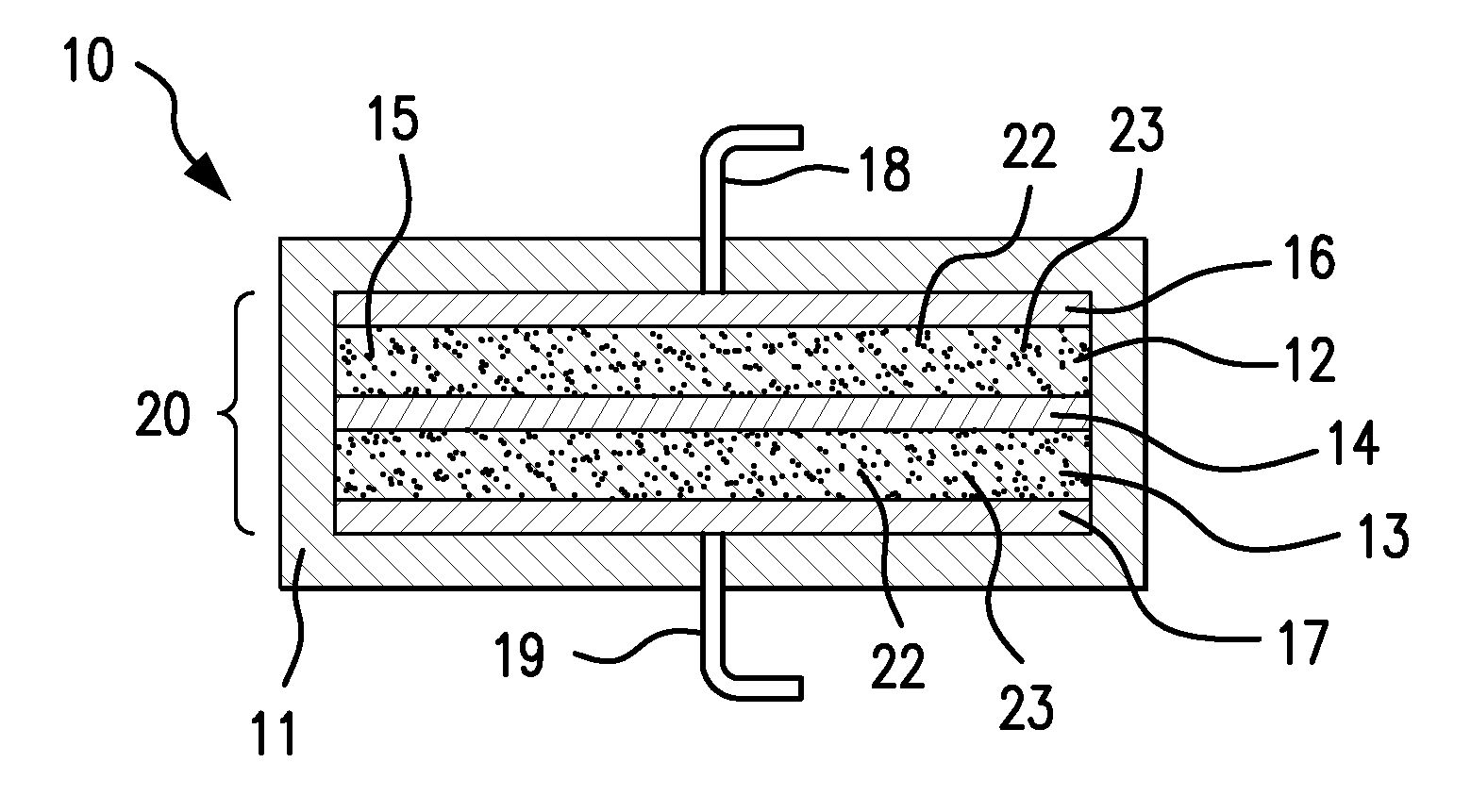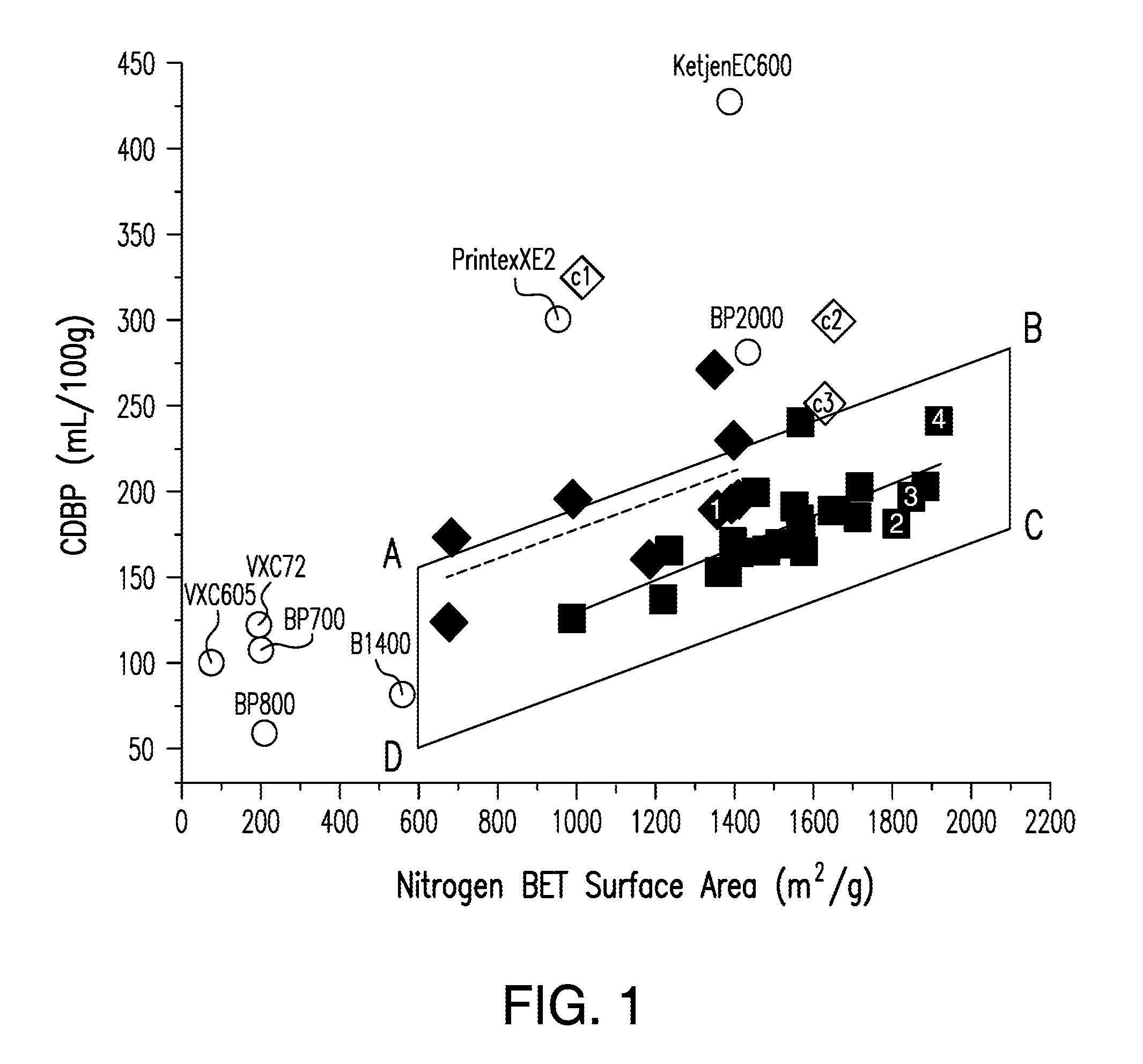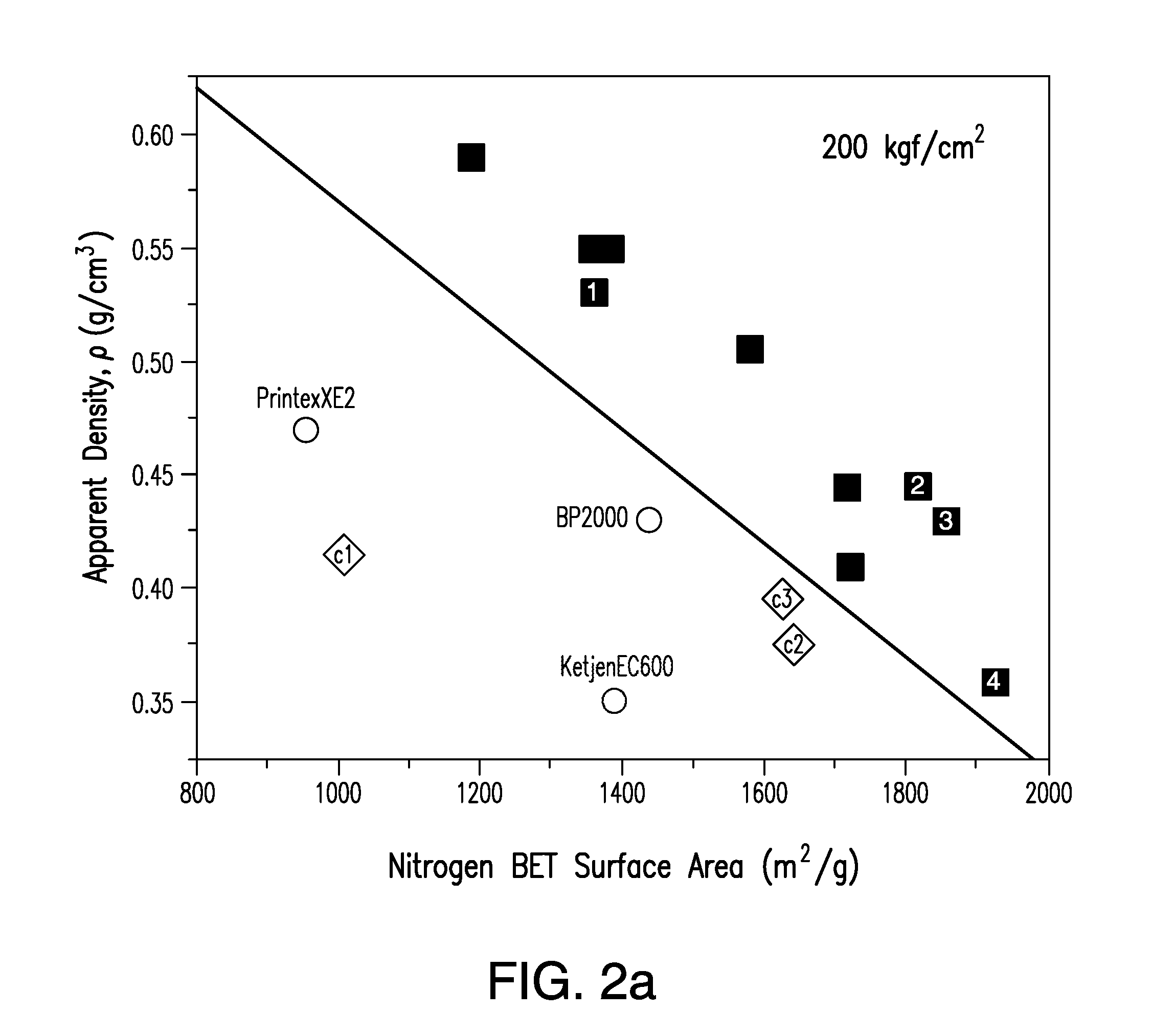High surface area and low structure carbon blacks for energy storage applications
- Summary
- Abstract
- Description
- Claims
- Application Information
AI Technical Summary
Benefits of technology
Problems solved by technology
Method used
Image
Examples
example 1
Preparation of Carbon Black
[0177]Four examples of carbon blacks were prepared in a reactor as described above and shown in FIG. 3, utilizing a liquid feedstock having properties set forth in Table 1 and reactor conditions and geometry set forth in Table 2. Natural gas was employed as the fuel for the combustion reaction. An aqueous solution of potassium acetate was used as the Group IA metal-containing material, and was mixed with a liquid feedstock prior to injection into the reactor in zone 3 (with reference made to FIG. 3). An aqueous solution of calcium acetate was used as the Group IIA metal-containing material, and was also mixed with the liquid feedstock prior to injection into the reactor in zone 3 (with reference made to FIG. 3). The reaction was quenched with water purified by reverse osmosis.
TABLE 1Feedstock PropertiesFeedstock TypeFS-AFS-BHydrogen (wt %)6.978.63Carbon (wt %)91.6490.68Sulfur (wt %)0.81Nitrogen (wt %)0.350.04Oxygen (wt %)0.230.65Specific Gravity at 60° F. ...
example 2
EDLC Sample Preparation Procedure
[0178]The four examples of carbon black (CB) 1-4 disclosed in Example 1 were analyzed for surface area, structure, and EDLC performance. With respect to surface area and structure, reference is made to carbon blacks 1-4 as identified by the corresponding number in solid square symbols in parallelogram ABCD in FIG. 1.
[0179]For each of the four examples of carbon black (CB) products, a dispersion of dry carbon black powder and polytetrafluoroethylene (PTFE) (available as 60 wt % solution from Aldrich) in water was prepared. The solid content of dispersion did not exceed 10 wt %. After homogenization, the mixture was dried at 85° C. over 48 hours to dry the water out so that the moisture content of the remaining carbon black / PTFE did not exceed 2 wt %. After grinding the resultant carbon black / PTFE composite with a commercial blender, the dry carbon black powder containing 12 wt % PTFE was rolled into a 145±10 micron thick electrode by a stainless steel...
example 3
[0185]The surface area, structure, and EDLC performance of one of the present invention's carbon black of Example 1 (Carbon Black 1) were determined and compared with those of carbon blacks made according to methods disclosed in U.S. Patent Application Publication No. 2009 / 0208751 A1 (c1, c2, and c3 as shown in FIG. 1). The EDLC sample preparation and performance measurement procedures used were similar to those in Example 2. The results are set forth in Table 4. As shown in the results in Table 4, Carbon Black 1 had superior overall characteristics and performance with respect to surface area, structure, and EDLC performance as compared to the comparative materials.
TABLE 4electrodecellcellN2 BETpackinggravimetricvolumetricsurfaceCDBPDBPdensitycapacitancecapacitanceMaterialsarea (m2 / g)(mL / 100 g)(mL / 100 g)(g / cm3)@2 V (F / g)@2 V (F / cm3)carbon black 113581891950.5824.514.21c110103224000.318.85.6c21642296370c316272502780.4121.99
PUM
| Property | Measurement | Unit |
|---|---|---|
| Fraction | aaaaa | aaaaa |
| Fraction | aaaaa | aaaaa |
| Fraction | aaaaa | aaaaa |
Abstract
Description
Claims
Application Information
 Login to View More
Login to View More - R&D
- Intellectual Property
- Life Sciences
- Materials
- Tech Scout
- Unparalleled Data Quality
- Higher Quality Content
- 60% Fewer Hallucinations
Browse by: Latest US Patents, China's latest patents, Technical Efficacy Thesaurus, Application Domain, Technology Topic, Popular Technical Reports.
© 2025 PatSnap. All rights reserved.Legal|Privacy policy|Modern Slavery Act Transparency Statement|Sitemap|About US| Contact US: help@patsnap.com



